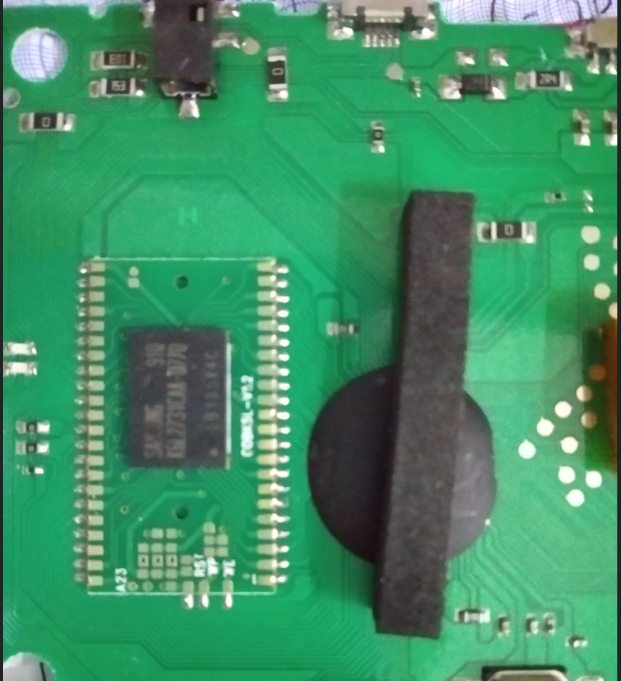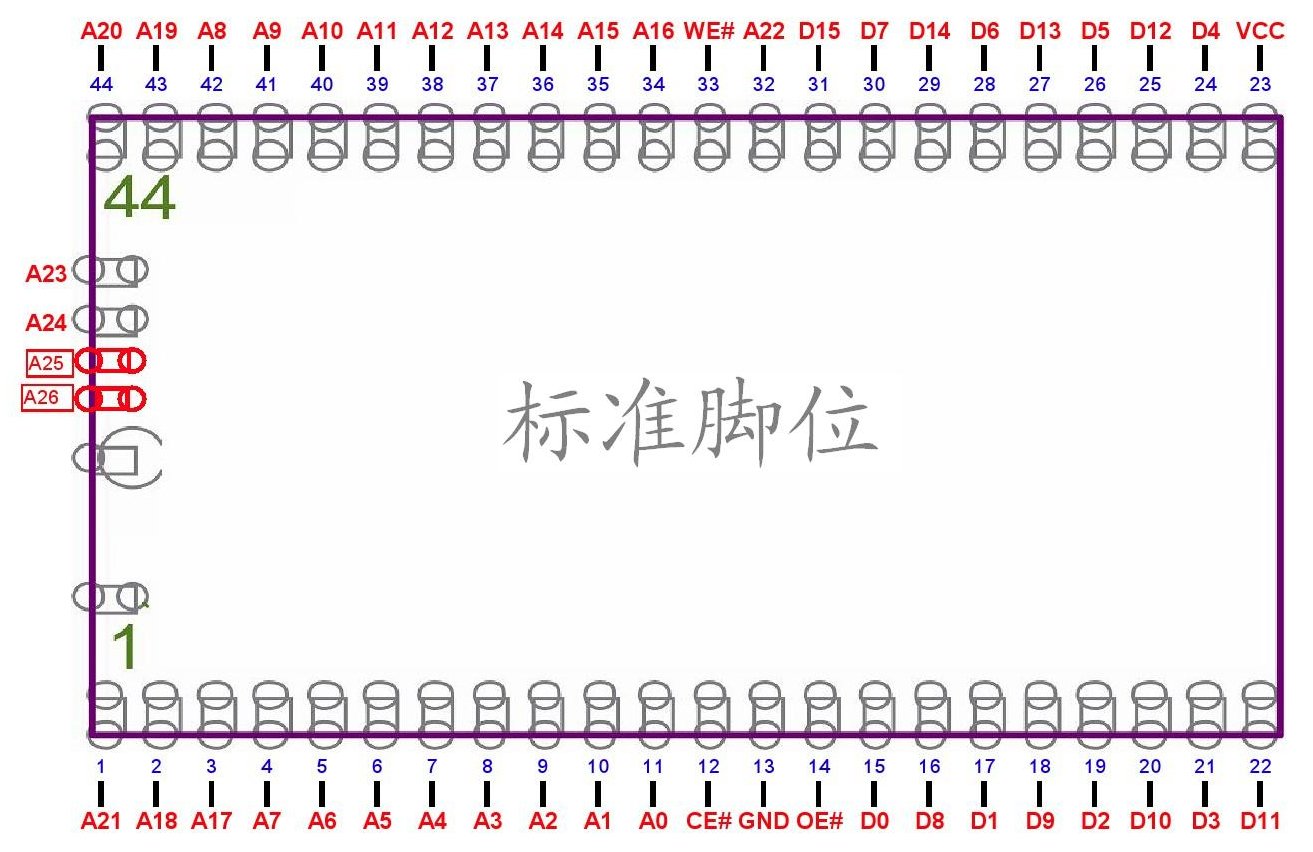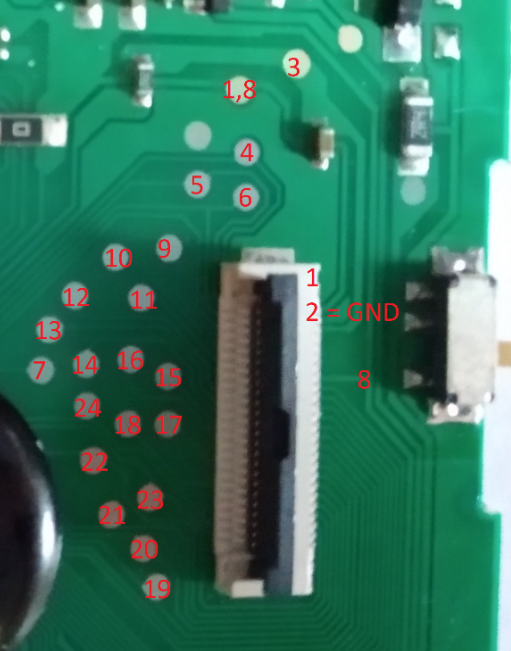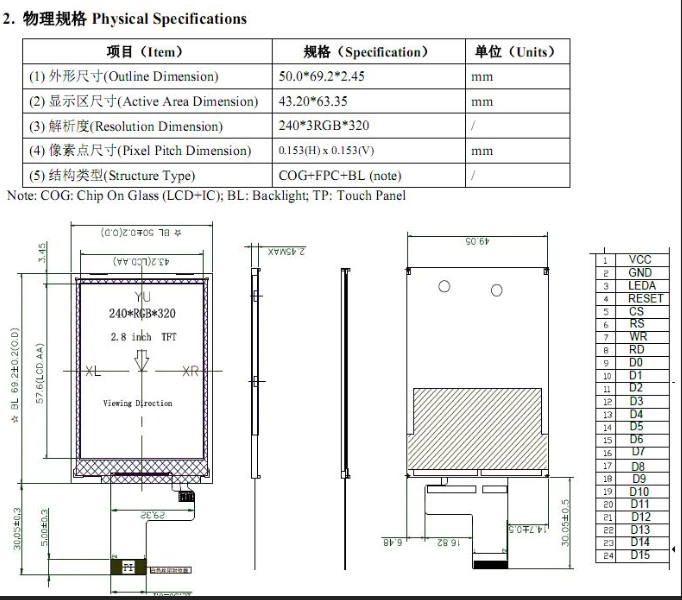-
Reading the address bus.
10/11/2020 at 13:05 • 0 commentsUnfortunately, these NOAC consoles tend to have either a TSOP-56 flash, or some sort of carrier board for BGA flash soldered onto it. Toss in some crappy and pirated games, they are ready to be sold to the market for 5 bucks and to (possibly) calm down a kid before he/she get bored of it.
What I got for myself is the carrier-board version. Removing it could be a PITA - I would either break the BGA, or probably the entire board if I'm not careful.
A look in the EEVblog forum article (https://www.eevblog.com/forum/beginners/fun-project-hack-cheap-handheld-console-help-with-bga-nand-flash-chip-needed/ ) shows that the carrier-board could have been using the general SOP-44 pinout for flash:
Armed with the logic probe, I must see what are the addresses that are accessed during its bootup...
-
TFT connections.
10/11/2020 at 12:51 • 0 commentsI started out with the TFT first. Using the oscilloscope (Analog Discovery 2) I managed to probe each of the lines (luckily those hand-helds do expose these lines with pads) and see what they actually do. Ah, and I had to use the multimeter to test the connection between the pads and the pins on the TFT connector:
After suffering from slouching and probing it one by one, I numbered these pads. For convenience.
With the oscilloscope, probing on the pads 5 and 7 shows a pulse train that is as long as 59.52uS and each pulse takes about 189.3ns. When I divide the length of the pulse train and the pulse, it gives around 314.42 - and it is suspected that this value is pretty close to 320, which is a standard horizontal resolution (320x240)?
The rest of the other 16 pins from pin 9 to 24 could be a 16-bit RGB 565 interface. Suspecting it is a 8080-2 interface, by reading the other common datasheets for other TFT like ST7789V and ILI9341. A search online on TFT with this interface gives this:
Yes - I'm highly suspecting that. Most of the stuff matches the TFT on that little game console. Unfortunately, there isn't any data on the model number on the TFT flex cable (RX-28H7069-A2) but on my first guess, the "28" could mean 2.8-inches. So, it's a high chance this TFT belongs to the 8080-2 interface.
Dissecting a hand-held NOAC console (Sup 400-in-1)
This is an attempt to understand how these little things work, and what we can do on it.



